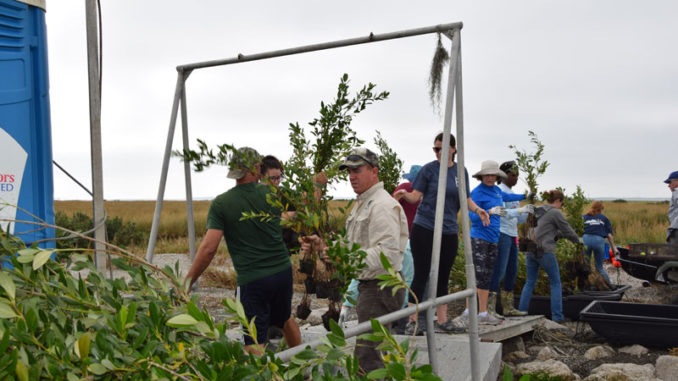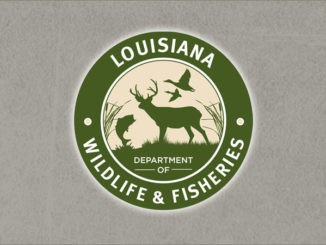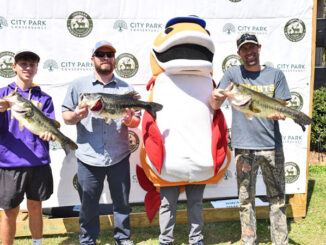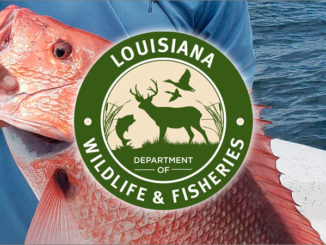
Volunteers from several organizations and Shell Oil gathered Thursday and Friday, Nov. 12-13, to help add nesting habitat to Queen Bess Island Wildlife Refuge, one of Louisiana’s largest brown pelican nesting colonies. The Louisiana Wildlife and Fisheries Foundation (LWFF) provided 4,350 mangrove plants and volunteers planted those along with 2,500 matrimony vines in an effort to increase nesting opportunity for pelicans and other colonial waterbirds on the island.
Queen Bess Island, a state wildlife refuge administered by the Louisiana Department of Wildlife and Fisheries (LDWF), is located in Barataria Bay near Grand Island in Jefferson Parish. It underwent a major restoration project that was completed earlier this year designed to add acreage for nesting opportunity. Adding mangroves and matrimony vine plants is the next step for even more nesting locations for the birds.
Volunteers from the Barataria-Terrebonne National Estuary Program (BTNEP), Louisiana’s Coastal Protection and Restoration Authority (CPRA), Restore and Retreat, Shell Oil, Jefferson Parish, Audubon Louisiana, Nicholls State University and Fletcher College as well LDWF took part in the project.
“We want to thank our many partners who assisted us in the planting project,’’ said LDWF Secretary Jack Montoucet. “Queen Bess is again a thriving nesting colony and our partnerships are a vital reason why. The number of pelicans and other birds that used the island last spring and summer far exceeded our expectations. The addition of this habitat will make it even better for nesting opportunity next spring.’’
The new plants will add more elevated nesting opportunities on the island. Mangroves, depending on the size, can support several pelican nests in one bush. That will add even more space for not only pelicans but also egrets, herons and roseate spoonbills and other species of greatest conservation need in Louisiana.

The restoration project enhanced more than 30 acres of the 37-acre island. Last spring about 8,000 pelicans nested on the small refuge, exceeding biologists expectations of about 1,500. A total of twenty species of birds nested with about 10,000 observed nests on Queen Bess last spring.
LDWF and CPRA jointly implemented the restoration project. Funding for the project came from the Deepwater Horizon oil spill Natural Resource Damage Assessment (NRDA) settlement administered by the Louisiana Trustee Implementation Group.
For more information on Queen Bess Island, go to https://www.wlf.louisiana.gov/page/queen-bess-island. For more information on the Louisiana Wildlife and Fisheries Foundation, go to http://www.lawff.org/.


